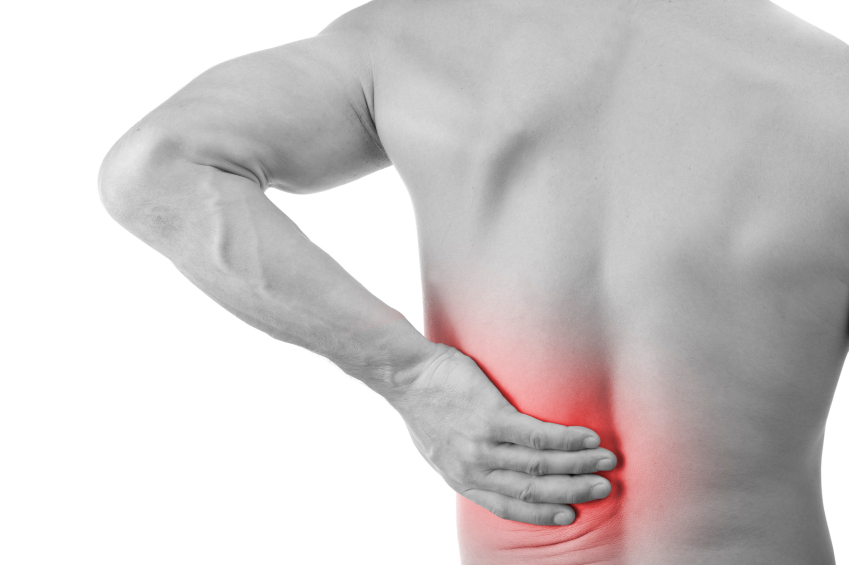If you’re like most people, you probably would answer this question with “A lot.” But do you really understand everything to do with pain?
Pain is a universal disorder. According to the International Association for the Study of Pain, pain is “an unpleasant sensory and emotional experience associated with actual or potential tissue damage or described in terms of such damage.”
In other words, pain is an unpleasant feeling you have that tells you something is wrong within your body. Basically, physical discomfort protects you from harming yourself to the point of physical damage.
When you injure yourself, your body automatically transmits a message from the point of injury to your brain and back again very quickly. Pain receptors at the point of injury or inflammation are stimulated. Chemicals released by these receptors travel to the spinal cord and tell it, “Ouch, that hurts.” The message is then carried by the spinal cord to the thalamus in your brain. The thalamus transmits the message to the cerebral cortex in your brain, where it’s processed. Once your brain perceives the pain, the message is sent back to the original location of your body that hurts.
Types of Pain
The types of physical discomfort are:
- Nociceptive pain – Specific pain receptors within your body that can sense temperature, inflammation, and stretch trigger this type of physical discomfort. Nociceptive pain may be somatic. Your skin, muscles, joints, bones and ligaments feel somatic discomfort. Nociceptive pain also may be visceral. Your internal organs or main body cavities, like your heart, lungs, abdomen, or pelvis, feel visceral pain. With visceral pain, the location of your discomfort is often harder to determine when compared to somatic pain.
- Non-nociceptive pain – Specific pain receptors don’t trigger this type of pain. Non-nociceptive pain can be either neuropathic or sympathetic. Neuropathic pain originates in the nervous system. Sympathetic pain occurs following a fracture or soft tissue injury of the arms and legs.
Pain Classifications
Physical discomfort can be classified as either acute or chronic.
- Acute pain – Refers to a sharp pain that occurs suddenly and lasts for 3 months or less. Acute pain often occurs after an injury, like a broken bone, burn, or cut.
- Chronic pain – Refers to pain that lasts for 3 or more months. Chronic pain can range from mild to severe. An on-going disease or condition can cause chronic physical discomfort.
Pain Is Subjective
Everyone feels pain differently. Therefore, it’s difficult to measure it objectively. Pain must be measured subjectively, based upon how it feels to each specific person. For example, pain is often measured on a scale of 1 to 10. A number 10 signifies extreme physical discomfort, while a number 0 refers to no pain. In cases where the pain is the same type and intensity, one person may categorize their physical discomfort as a 9 while another person says their pain is a 5.

Photo credit: 123RF / Kamil Macniak
Pain Treatment
The objective of treatment is to reduce the severity of the pain or to get rid of it altogether. Depending on the source of the physical discomfort, many treatments are available, including medications, physical therapy, and surgery.
Custom Orthotics Can Provide Lower Extremity Pain Relief
If you’re experiencing foot pain or pain of the knees, hips, and/or lower back, you may want to consider wearing ezWalker® Custom Fit Orthotics. These custom arch supports are designed to strategically raise the medial, lateral and trans-metatarsal arches of your feet. With proper foot support, your body will be better bio-mechanically aligned from your feet up. Therefore, every step you take as you walk will be controlled throughout the gait cycle. With the help of ezWalker® Custom Orthotics, you’ll feel reduced stress and strain on your feet, knees, hips and/or lower back.
Visit the WalkEZStore to learn how ezWalker® Custom Fit Orthotics can improve your foot mechanics and reduce your pain. Or, click here to order your ezWalker® custom orthotics today!
Because … when your feet feel good, you feel good.®
Disclaimer: The information included in this article is for educational purposes only. It should not be used as a substitute for professional medical advice, diagnosis or treatment.
Cover photo: iStock Photo


